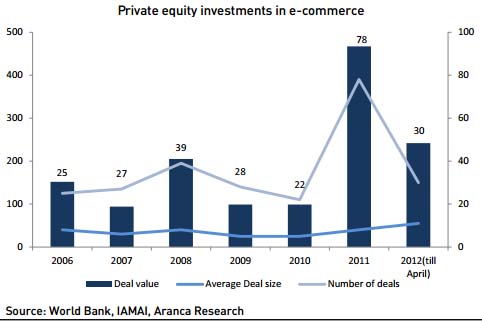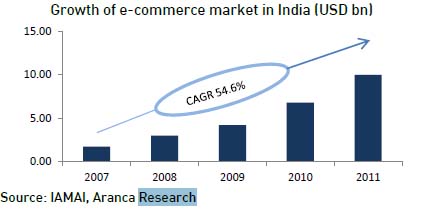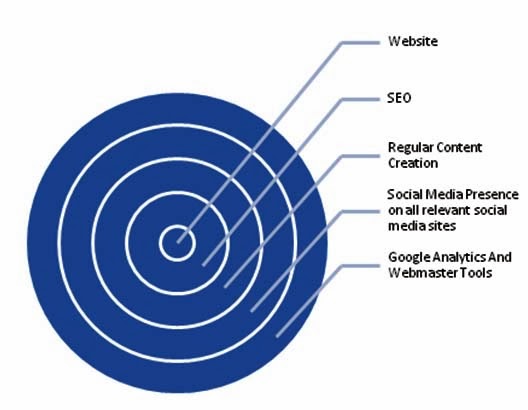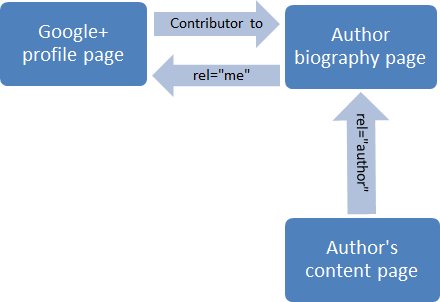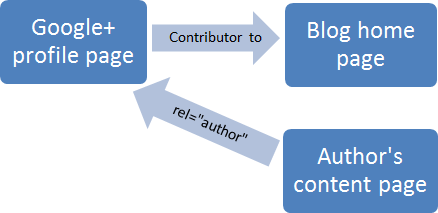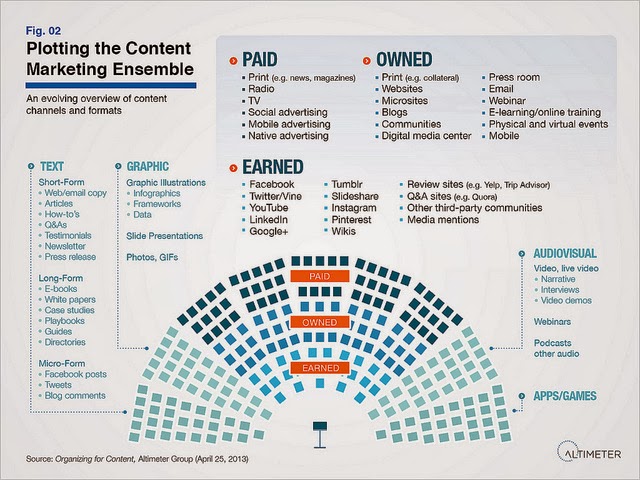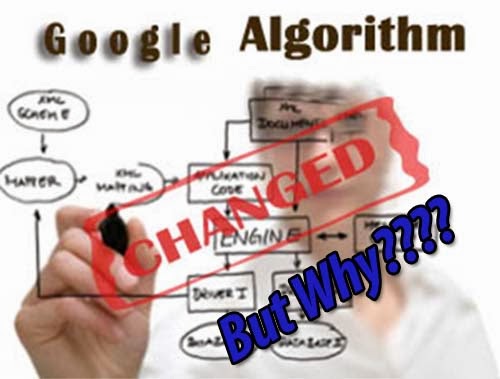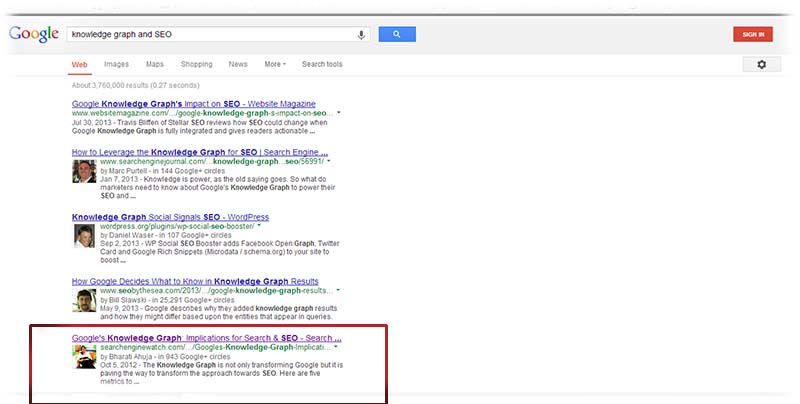- How To Get More Comments On Your Blog Posts
- If Content Is King Then Context Is Queen And The Trust Factor Is The Royal Crown
- Content Marketing Is A Great SEO Strategy But It Is Not The New SEO
- Drawing Professional and Friendship Boundaries At Work
- 5 Most Useful SEO Tools
- The Google Glasses Project - The Future Technology
- The Technical Anatomy, Basics And Beauty Behind A Tweet
- PageRank And A 301 Redirect
- Is WordPress or Blogger better for SEO? Matt Cutts Answers The Question
- Entrepreneurship, The World Wide Web And Women’s Day
- A Short Summary Of What Amit Singhal Spoke At SXSW conference 2013 in Austin
- Google’s Initiative To Help Hacked Sites
- Google: From Google Glasses To The Talking Shoe
- Google Announces The Launch Of Think Insights
- Is Your Blog Content Friendly And Authorship Compliant
- Upcoming Weekend Workshops At AMA To Be Conducted By WebPro Technologies
- Strengthen Your Blog's Rep, Step by Step
- Content Marketing – From Renting An Audience to Earning An Audience
- Some Valuable Content Gems From The B2B Content Conversions Conference April 2013
- The Jeffalytics Google Analytics Periodic Table
- What the Google Glass users see when they look through their Google Glasses ?
- Penguin 2.0 And What Is In Store For SEO In The Next Few Months For Google
- Google I/O 2013 : Just Say “OK Google” To Search Hands Free in Chrome
- Company Logos In Google SERPs using " Organization Mark Up"
- What Is Responsive Web Design And Why We Should Opt For It?
- SEO Is A Necessity, Content Creation Is A Strategy And Social Media Is The Channel
- The Concentric Circles Of Quality Web Presence
- The Digital World Challenge Faced By The Chief Marketing Officers (CMOs) In 2013
- Matt Cutts Answer To : Does using stock photos on your pages have a negative effect on rankings?
- Advanced SEO Means Adapting To WWW Standards Before Google Integrates Them In Search Algorithms
- The Evolving SEO Mindset In 2013 ( 25 Points)
- Google’s New "In-Depth Articles" Feature For SERPs And How To Optimize Your Site For It
- Google Wants Feedback About Small But High-Quality Websites That Could Do Better In Search Results
- The Android Ladoo Campaign - Lets Make Android Delicious
- Google+ Author Attribution And WordPress Sign-In
- The Indian E-commerce Industry Emerging Trends At a Glance
- SMX East 2013 Insights On Topics Related To Organic Search For SEO 2014
- Content , Branding, Research and Strategy As The Root Of Any Internet Marketing Activity
- Understanding The Purpose Behind Each Google Algorithm Update Is More Crucial For SEO
- We Have Moved To Our New Office (Some Pics.)
- SEO Client Conversations : The CC (Client Conversation) Series
- Matt Cutts Asks For Suggestions To Fine Tune Webmaster Tools Further As 2014 Approaches
- Why Do We Need More Quality Content To Get Correlated To Our Web Presence ?
- The Misuse Of Authorship Markup And Publisher Markup
- SEO 2014 The Year Of Positive SEO And The Survival Of The Fittest
SEO 2014 The Year Of Positive SEO And The Survival Of The Fittest
Author : Bharati Ahuja
The Year 2013 has given the most shaking algo shocks to the SEO industry.... Courtesy Google....
But, despite all the shocks and after-shocks of the Panda and Penguin updates the SEO industry is still positive (at least I am and am not going to say ‘I Quit’ for a long time to come) . SEO is still alive with more energy and synergy with the web and the search engines.
In fact as I had mentioned in one of my blog posts in 2011 Why the changes made by Google meant good news for the SEO industry . This was at a time when the whole SEO industry was against the changes being made especially when Google introduced Encrypted Search and the keyword data got taken away from us. http://www.seocopywriting.com/content-marketing/why-googles-recent-changes-mean-good-news-for-the-seo-industry/
In December 2013 we had mentioned the following points to be focused upon for SEO which will be applicable in 2014 too:-
- On Page optimization as per the W3C standards
- Have a web presence on various platforms
- Update your blog regularly
- Co relate web presence with fresh content by blogging, commenting, discussing, sharing links on social media from your own site and blog plus from other authority sites of your industry.
- Have a YouTube video channel and share videos and embed them on site or blog.
- Google+ as of now may not be the most widely used social media platform but it as major Google products in some way or the other converge on Google+ your Google+ account has the potential of becoming your passport to your online identity hence ignoring this platform or not having a presence on Google+ is like applying for a VISA without a passport .
- Submit XML sitemaps for site, blog and video XML sitemaps for videos embedded on site or blog.
- Apply for Twitter Cards and integrate them with your blog once the application is approved by Twitter.
- Integrate FB Open Graph on blogs.
- Integrate Authorship Markup on the blog to co relate your content with your online persona which can lead you to be a thought leader of your industry which in the long run can add to the trust factor.
- Focus on ‘Less Is More’ instead of having 5 posts a week publish 2 posts per week but of relevant in depth information in all forms i.e text, video, infographics, podcast,etc. It’s the quality that counts not the quantity.
- If you cannot create content regularly then curate content.
- Use Schemas for addresses, events, people, recipes, books, ebooks,video, etc.
- Focus on building a community and retaining their trust as your community can play a major role in helping your content go viral.
- As in real life you are known by the friends you keep , in the online world you are known by the people that follow you and the people that you follow.
- In the real world you are what your thoughts are and in the online world you are what you publish and share.
- The above points help you earn links. Let the inbound links get built as a result of quality web presence rather than running after them.
- All the above points have a direct impact on the off page optimization giving a boost to the search presence .
- Focus on the technical SEO by working on XML sitemaps, by monitoring Google WMT , canonicalization issues, HTTP headers, rich snippets in search results which are achieved by using schemas and microformats , customized error pages, robots.txt, improving the site speed, etc.
- Local search is as important as global search hence cannot be ignored.
- Follow the path of hard work to develop this overall presence gradually rather than following the short cut of buying fake likes , followers and +1s . The short cuts followed today will become a penalty in future once Google upgrades its algorithm for detecting it like the Penguin Update for spammy links which made all the link builders undertake the task of undoing those same links which they ran after once.
- Go mobile and check the accessibility of your site on hand held devices else develop Mobile Apps. For widely used services of the site.
- Help Google to give quality search results to the users and Google will help you in return by giving you the search presence you deserve.
- Focus on the metrics that matter in Google Analytics according to what goals and priorities you have set for yourself to improve search presence.
- Do not put all the eggs in one basket. Have a Bing WMT account too and monitor the search presence on Bing too.
- Where did you start?
- Where have you reached?
- Where you would like to reach?
- How will you reach there?
- Implement the plan.
- Monitor and create a plan
- Implement the updated plan > Repeat
33. The strategy can start from inside out or you can go outside in. That is you establish the goals and then decide what changes need to be made on the site or web presence as your site is at the nucleus of your web presence or you can start working on the site right from scratch and reach the outer circle of search presence. Explained in detail on The Concentric Circles Of Quality Web Presence
34. Do not go for cheap SEO Packages as SEO is not free or cheap. It requires expertise and effort and any company offering services which offer genuine long term, futuristic search presence will charge a reasonable amount.
35. SEO is a necessity, social media is the channel and the content creation strategy determines your online brand identity.
36. Today the challenge for the website owner is how to keep these activities coordinated and connected and make each task benefit from the other and get an overall boost to the online presence by capitalizing on the digital assets created thereby. It becomes more challenging if these tasks are performed by different services providers. http://www.webpro.in/the-digital-world-challenge-faced-by-the-chief-marketing-officers-cmos-in-2013/
37. SEO is not limited only to the SEO team but each and every team member needs to be aware of how social media , content and SEO are integrated . SEO is not a onetime process, hence SEO has to be an ongoing process and has to be integrated in the whole marketing mix.
38. SEO is less about bots but more about people. Customers will love the company only if the employees love it first. Hence, educating the whole team about SEO should be an on going process and the SEO should include training the client about the new developments as a part of the SEO project.
39. SEO should not only limit itself to perform only repair functions on the site to get into search results but just like a good engineer applies scientific, economic, social, and practical knowledge in order to design, build, and maintain structures, machines, devices, systems, materials and processes. A good SEO needs to apply technical specifications that define and describe aspects of the World Wide Web which directly or indirectly affect the development and administration of web sites and consider include the interoperability, accessibility and usability of web pages and web sites from the WWW perspective. Instead of dissecting the algorithms we need to understand the standard norms of web design and development which will make the web a better place and websites robust technically.
40. The SEO industry is at that point of the graph where it is going to scale new heights and emerge as more meaningful and essential for website owners and search engines as well. Content and quality have always been king since the first web page was published but Google has been successful in penalizing the low quality content and help clear the content clutter and the linked clutter on the web with its algorithmic updates just recently.
As the web evolved the search engines evolved and only when the SEO mindset will also evolve side by side the status and the reputation of the SEO industry will achieve the due respect and importance in the coming years.
Last 3 year-end SEO posts of our blog:
Dec. 2010 : http://www.webpro.in/seo-and-online-presence-in-2011
Dec. 2011 : http://www.webpro.in/saying-bye-to-seo-2011-and-a-very-big-hi-to-seo-2012
Dec. 2012 : http://www.webpro.in/points-to-ponder-on-for-seo-2013
The Misuse Of Authorship Markup And Publisher Markup
Google authorship Mark up is the foundation stone for the edifice of the Knowledge Graph. The proper use of the authorship Mark up ensures the author to claim the content and thereby helps the author to establish the online thought leadership as regards a certain subject or topic. Authorship Mark up also displays the author picture in the search results when that content gets listed in the search results.
Hence, the authorship mark up helps the author to get correlated to the content as the markup uses existing standards such as HTML5 (rel=”author”) and XFN (rel=”me”) to enable search engines and other web services to identify works by the same author across the web.
The main purpose of the Authorship Mark up when it was announced by Google in June 2011 was a way to connect authors with their content on the web and use this data to help people find content from great authors in search results.
Google has made it very simple to claim the Authorship by helping the authors to implement it by the following methods:
1. 3 Link Method – (For Multi Author Blog)
2. 2 Link Method – (For A Single Author Blog)
3. Email Verification – ( Via Google+ Account)
It is very obvious that this mark up is being promoted by Google so that Google can filter the grain from the chaff and help its search engine users to get quality results and also help the users to know the person behind the published post. Moreover authors have to write informative and quality posts to prove themselves to be an authority on the subject. This requires a lot of effort and hard work from the writer’s side. It is not about just adding a piece of code or linking your Google+ account to your site and claiming oneself to be called an author. But, this is what is exactly happening – anyone who implements the above mentioned methods gets the benefit of the authorship mark up which is defeating the very purpose for which it was launched.
Ideally, the Authorship Mark up should work only on blogs but it even gets implemented when it is added to simple static brochure sites too. This I think is like spamming the search results to promote yourself as there is no content on these static site which needs to be claimed by the author. This is a very big injustice to the authors who work hard and write quality posts and try to establish their identity and promote their views because people by adding the few lines of code on any of the home page of their simple sites too get the same benefit in SERPs like the one who has claimed the authorship markup by creating and maintaing a blog by adding quality content regularly.
I think Google should work on this and only blogs publishing quality content regularly should get the true benefit of the Authorship Mark up and the business sites on which this mark up is found should not be considered at all. Another nuisance about this markup is that instead of the author’s pic. Many times the website owners want their picture to be displayed in SERPs which again is very misleading. In such cases if the content written by any author is the owned by the business the Publisher Markup needs to be implemented where instead of the picture of the author the company logo is displayed which correlates the company with the content. This helps the user to know the ideology of the company as that content is claimed by the company rather than the writer.
Content Marketing has become the life line to attain quality web presence. The content and the creator cannot be separated hence the right use of the Authorship Mark up and the Publisher Mark up helps to send the right signals to the Knowledge Graph which is getting updated and built with every piece of content which gets correlated to your web identity.
Why Do We Need More Quality Content To Get Correlated To Our Web Presence ?
‘Quality Content ‘ is a term which everyone seems to be focusing on currently for getting a better search presence. SEOs go out of the way to encourage and convince website owners to create a blog and add content and then try to reach out to share that content in order to get more eyeballs to their site. It seems very logical but website owners need to delve deeper to understand the purpose and the logic behind creating and sharing content to get long term quality benefit from this whole process of Content Marketing.
Firstly, the term ‘Content Marketing’ itself is very misleading just as the term ‘link Building’ was misunderstood when Google introduced the ‘PageRank Technology’. Bill Slawski rightly shared on Twitter a few days back...We do not create content to market content but we create content because we want to market the product or service that we are dealing in.
"Content marketing" isn't about marketing your content, but instead about using content to market something!
— Bill Slawski (@bill_slawski) November 20, 2013
Since Content is the medium via which we represent our online persona by expressing our company ideologies, product features, future plans of the company, discuss after sales issues, etc. we need to focus on content.
The Content Marketing Ensemble Of Content Channels And Formats
(Photo credit: AltimeterGroup)
Let us answers a few questions related to Content marketing to understand the true meaning.
- What Is Content Marketing?
- What Is The Purpose Behind Content Marketing?
- Why Do We Need To Create And Share Quality Content Regularly?
- Does Content Marketing Focus On Selling?
What Is Content Marketing?
Content Marketing refers to creating and publishing of content in various formats and sharing it via various media in order to get more customers and boost sales.
What Is The Purpose Behind Content Marketing?
Though content marketing targets mostly at getting more customers but in the process if managed and executed methodically , meticulously and strategically it helps in brand promotion , communicating with customers and also helps improve goodwill .
Why Do We Need To Create And Share Quality Content Regularly?
Marketing can never be a one time activity. Even the most established business needs to have market presence in some form or another. From the internet perspective there are millions of sites being published on a daily basis and since the potential online customers most of the time reach your site via search engines your online presence faces that much quantum of competition also on a daily basis. As search engines become more and more sophisticated to integrate quality and quantity signals to websites from all over the web in their index the need to keep your web presence updated with more and more relevant information which is informative and knowledgeable becomes increasingly important.
Does Content Marketing Focus On Selling?
The long term objective of any activity related to marketing is to improve sales, increase profits and retain customers . Content Marketing has the potential for achieving all this but when creating content if the focus is only on sales and the content eventually turns out to be in the form of an advertisement then it may not serve the purpose. If the content is informative and offers solutions to the people who have reached the URL of your content via various platforms then it has the potential of reaching out to you, and such a prospect usually requires very less effort to get converted to a buyer (assuming all the content read by him has created a positive image in his mind about the company).
Content Marketing adds more footprints on the web for web presence but also becomes the crux of connecting to people on the web which in the long run help share the word of mouth which is the basis on which decisions are taken by online buyers.
Most of the time people don’t want to listen to what the seller has to say about his product as this is advertising but they want to know what the previous buyers have to say about the product as this becomes the actual feedback about the product or service which has more impact on the decision making process.
As in real life we are what are thoughts are and we share our thoughts via discussions, seminars, exhibitions, road shows , etc. on the internet we need to share our thoughts via blogs, social media sites, videos, comments, reviews, etc. and on the internet majority of the people use search engines to find information hence the search engines have the onus of correlating all these collective signals from the company blogs, social media sites, comments, reviews, etc. and display the search results after calculating the quality parameters to give quality results to its users. The search engines lately have upgraded their algorithms and are constantly upgrading their algorithms to integrate more and more of such signals so it has become mandatory for the website owners to focus on correlating more content to their web presence in very form to have a complete blended search presence.
Hence, the content you create, share or promote gets correlated to your online persona which has the potential of being found by the search engine users whenever they search for information connected to the content your persona is correlated to.
Matt Cutts Asks For Suggestions To Fine Tune Webmaster Tools Further As 2014 Approaches
Every SEO is always on the lookout for some great SEO Tools which will simplify and facilitate the work of optimizing websites. There are many SEO tools available in the market but I am sure every SEO will vouch for the Webmaster Tools and the Google Analytics offered by Google in order to monitor and measure the website’s progress .
Google webmaster tools is part of a marketing effort by Google to reach out to Webmasters and promote Google services. I call it a platform to converse and communicate with Google regarding your website. On this platform Google basically tells you how to help them to keep a track of your website and in return informs you about how your website is being indexed and crawled by the Googlebot.
Improving the features of Google Webmaster Tools is a constant endeavour for Google. The WMT keep on regularly getting upgraded with the latest features.
Since Vanessa Fox started working on Webmaster Central in 2005 till date WMT have been updated several times and as 2014 approaches Matt Cutts has asked everyone on his blog for suggestions to improve the WMT further to take it at a new functional level.
Some things that Matt Cutts could imagine people wanting are:
- Make it easier/faster to claim authorship or do authorship markup.
- Improved reporting of spam, bugs, errors, or issues. Maybe people who do very good spam reports could be “deputized” so their future spam reports would be fast-tracked. Or perhaps a karma, cred, or peer-based system could bubble up the most important issues, bad search results, etc.
- Option to download the web pages that Google has seen from your site, in case a catastrophe like a hard drive failure or a virus takes down your entire website.
- Checklists or help for new businesses that are just starting out.
- Periodic reports with advice on improving areas like mobile or page speed.
- Send Google “fat pings” of content before publishing it on the web, to make it easier for Google to tell where content appeared first on the web.
- Better tools for detecting or reporting duplicate content or scrapers.
- Show pages that don’t validate.
- Show the source pages that link to your 404 pages, so you can contact other sites and ask if they want to fix their broken links.
- Or almost as nice: tell the pages on your website that lead to 404s or broken links, so that site owners can fix their own broken links.
- Better or faster bulk URL removal (maybe pages that match a specific phrase?).
- Refreshing the existing data in Webmaster Tools faster or better.
- Improve robots.txt checker to handle even longer files.
- Ways for site owners to tell us more about their site: anything from country-level data to language to authorship to what content management system (CMS) you use on different parts of the site. That might help Google improve how it crawls different parts of a domain.
If you have any other suggestion as regards the new features wanted for WMT post your comment on http://www.mattcutts.com/blog/webmaster-feature-requests/
SEO Client Conversations : The CC (Client Conversation) Series
I have been working on SEO projects since 2000 and have had many interesting , funny, enriching and mind boggling conversations regarding SEO with the various clients since then. I must say that if SEO and the Web have evolved then alongside the client’s approach to SEO has also evolved and the kind of questions the clients have been asking and seeking answers to has also progressed since 2000.
We keep on reading a lot about the latest algorithm updates, SEO News and almost everything about SEO and related to it but the client side thought process is rarely discussed on the blogosphere. I think if we discuss this and share our conversations then the thoughts and fears of the much involved netizens who read the SEO blogs and also those who are totally unaware about what search and web optimization is all about, will come into the limelight and help us from a SEO third party perspective .
I start this series with one of the conversations I recently had with a reputed client who has since 18 months have been very cooperative and have appreciated the SEO efforts put in by us.
The site statistics are as below since we started working on the site in June 2012
The site statistics after the site started improving after the initial SEO efforts in October is as below:
As you can see that the site despite the Penguin, Panda and the recent launch of the Humming Bird Engine has remained stable and is bound to improve further with the content strategies planned for the future.
But, the fears and questions the client voiced lately is as follows:
Client:
I just came to know that our competitor site is getting more than 1,00,000 visits per month. Please let me know why our site is not doing that well.
( After I went thru the competitor site I came to know that the site was another initiative of a very famous site which had a very good reputation and a very large link profile.)
Me :
Look we cannot compare our site to the one mentioned by you . Despite the fact that the sites relate to the same topics but their external link profile and popularity is very different . The competitor site is benefitting from the reputation and popularity that they have built over a period of 8-10 years. But our site is still 1.5 years old and has to yet gain popularity and a good Word Of Mouth over a period of time. Instead of focusing on how many visits the competitor site is getting let us focus on how to improve the services that we offer online and work on strategies to improve the outreach via social media and blog content . We should also think of how to keep in touch with the existing base of online existing customers . Talking about why the competitor is getting more visits will only mislead us and lower your confidence. Maybe with the kind of TV Ads and offline advertising the competitor is investing in this the no. Of 1,00,000 (Which you consider very high) maybe very low in magnitude as per their expectations.
We cannot judge the success of any campaign with only one metric. If we compare the two sites we know that we do not advertise on TV which requires a very big budget but they do. Their parent company is online since nearly 10 years hence they already have a database of regular visitors and link profiles. But, we are a 2 year old company and did not have any prior online presence and offline presence has been very local – in fact at the city level and not at a national level too. But with the website now the company has a global presence .
Client:
Yes, but the visits have to increase ...
Me:
Yes, after achieving the basic objectives of optimizing a site such as sorting the technical issues of the site and completing the major on page tasks like it has been done on the site, we have to work on the social media and content strategies. Our main objective now should be to see that the visitors coming to our site are getting the required answers to their queries as you can see the no. Of landing pages have increased hence the visitors are reaching their destination page with just one or two clicks so we have to see that they get the required information on those pages which have a good recall value and a good first impression so that they recommend it via social media channels and also post reviews. All these signals will not only increase visits via other sources but also improve the search presence and thereby proportionately have a positive effect on the visits via search engines too. Hence, if we work on the quality factors then the visits will increase but if we discuss why we are getting comparatively low visits then we are wasting our time because as compared to our previous presence we are doing quite well so we have to forge ahead in the same direction. We can achieve our goal only if your expectations are realistic and our efforts are in the same direction.
Client:
I think you are right let us meet next to finalize the social media and content strategies.
The main objective of starting these client conversation series is to share my experiences with other SEOs so that we get a chance to learn from each other and are prepared when we face a similar situation which has already been faced by someone else. Please write to us at info@webpro.in if you would like to share your client conversations on our blog.
As an SEO what would be your approach to the situation mentioned above? Please share in the comments below.
I hope these series will be informative and be helpful to our readers.
Understanding The Purpose Behind Each Google Algorithm Update Is More Crucial For SEO
Google turned 15 last month and Amit Panchal posted on the Google blog that:
"We’ll keep improving Google Search so it does a little bit more of the hard work for you. This means giving you the best possible answers, making it easy to have a conversation and helping out before you even have to ask. Hopefully, we’ll save you a few minutes of hassle each day. So keep asking Google tougher questions—it keeps us on our toes! After all, we’re just getting started...."
Google from the time it started as a search engine has always focused on search as their main activity. Social media initiatives (Especially the Google+ initiative) have primarily been made to add quality social signals to improve search results. In fact I think each and every Google product along with the search algorithm updates are directly or indirectly connected to the quality of search results they display on the Google search engine.
The latest talk of the SEO town - 'The Hummingbird Update' points out the latest effort made by Google since it started in 1997. Every update since then has been made with a goal to improve the quality of search results and display the 10 blue links as per the search made by the user in the query.
Google has remained focused on one main goal i.e “To give quality search results to the user” . Google has been trying to reach closer to this goal with each algorithmic update . But as Google is one entity and its users include each and every human on this planet , every update gets interpreted differently by each one and also gets implemented differently by each one.
Let us go in the past and dissect a little:
In the late 90’s when Altavista was the main search engine being used by people and word to word mapping was the sole ranking factor on search engines people spammed their websites by repeating the keywords and also by hiding the keywords by camouflaging the font colour with the background colour of the page. When Google came up with the PageRank Technology to beat the keyword spam Google became THE SEARCH ENGINE and churned out high quality search results which made people discard Altavista and make Google their constant search companion.
The PageRank Technology (An effort by Google to improve search results for the user) is not bad but the way it was interpreted and spammed by the people to rank better is what is bad. The PageRank Technology was spammed so much by people that a new industry namely the LINK BUILDING INDUSTRY came into existence. This link building went to such an extent that people paid a huge amount to buy links. This kind of link spam increased so much that the main purpose of the PageRank Technology was defeated and Google in order to beat that had to recently come up with a Penguin Update and the disavow tool (An effort by Google to improve search results for the user ) which penalised websites with low quality and non-topical links.
The Penguin Update made people again stand up on their toes and made them undo all the paid and irrelevant links they had to their websites for which they again paid a huge amount. i.e first they paid to get links to remain in the search results and now they are paying to remove those links to remain in the search engines.
The PageRank Technology remains the same and is also one of the main quality signals which Google gets about a website but as the people spammed it the essence of the whole technology evaporated and resulted in unnecessary clutter on the web diluting the quality of the search results.
When Google integrated social signals (An effort by Google to improve search results for the user ) in their search algorithms the whole web took an about turn to social media sites to remain in the search results. But, again just being on social media is not enough the social media profile needs to send quality signals to search engines in order to include them in their search results. Of course what social media signal parameters are integrated in search is a very debatable issue . But, in order to get first hand social media data Google came up with their own social media platform i.e Google+ and every business today even if they are not active on Google+ have a Google+ profile, but is that enough ? The answer is an emphatic - “NO” and beating the spam on social media is the next big challenge for Google .
Apart from signals to the search algorithms via links, social media, meta tags, etc. Google currently is focusing on semantic search which focuses on the meaning of the content in the search query and in the content of the websites in the Google index. For this Google has introduced the Knowledge Graph , The Authorship Markup and now the Hummingbird Update.
Google started with a goal to give quality search results to the users as per the technology standards available for hardware and software at a give point of time but as it went ahead it also had to work at beating the spam which people kept on bringing on the web to just remain in the search results . This of course makes Google remain on its toes and makes Google keep working on becoming better than it was previously, which is in fact Good and bad for Google – Good because all the spam Google has to beat and face makes Google remain humble which is very much necessary as the kind of monopoly Google is having for search it can be very dangerous and unhealthy for the entire web. Bad because unnecessary clutter keeps on getting added on the web in the form of spammy links, low quality Content, a bad reputation for the SEO industry, misleading and wrong social signals, mistaken identities, etc.
Google has been focusing on the term QUALITY right from the beginning but people have been interpreting the meaning of quality as per the algorithms instead of the true meaning of the term. We have to understand one cannot buy reputation and popularity but we need to earn it, we cannot buy friends, followers and people to include in our circles but we need to make friends by the way we interact , connect and help them. Just adding content is not enough but every piece of content needs to be informative or offer solutions for which people are searching on the web. The content, links, social media signals and the overall online reputation resulting from the total footprints made by your overall online presence from the time you created an online identity will determine your knowledge Graph which should become stronger with every Google update rather than make you to undo stuff to remain in the search results. After all the online world is a reflection of the real world and the same rules pertaining to life and business are applicable.
A very good real time example of manipulation of schemas on the site came up during one of the sessions at SMX East 2013 held recently in the first week of October which I attended.
Chris Silver Smith, President, Argent Media (@si1very) during his presentation mentioned that as Google is giving more importance to rich snippets and schemas it is a good practice to add the selective Google reviews on your site using schemas. But in reality this again is like the misleading signals that the spammy link building efforts generated . The PageRank which got misinterpreted by some generated a link clutter on the web and created a link of all wrong wires getting connected which resulted in the short circuit of quality rather than lighting the bulb of quality due to the link building connections. Similarly adding random reviews on the site though in the form of schemas will not achieve the purpose of semantic search. The ideal way to add the reviews and rating on the site is to add a tool for rating and reviews on the site which the users can use and express their views so that Google gets a true idea about the product or the service the business is offering and correlate it with the user experience and feedback to ascertain the quality signal.
Quality signals can be ascertained by Google only if they get the aggregate feedback of any business online via the user response on the site. When any website owner filters the reviews and adds the selective reviews on the site then it surely falls under the SPAM category.
This was in fact pointed out strongly by Pierre Far of Google who was attending the session and could not resist himself from putting this point forward that any kind of such efforts are not as per the norms of Google.
Many times unknowingly a hasty implementation of any kind on the site can harm the site rather than healing it for a previous update or prepare it for a future update as explained in the example above. Hence, the right interpretation of the Google updates and understanding what Google is trying to achieve with every update should be a priority for every SEO before going on an implementation and an executing spree.
Content , Branding, Research and Strategy As The Root Of Any Internet Marketing Activity
The web has come a long way since more than a decade now and it has evolved technically and also there are behavioural changes in the way people use the web. In 2000 when the internet started being used on a large scale mainly for communicating via email the online marketers focused on email marketing and banner ads. on Yahoo, mainly because every second person had an email id on Yahoo and that seemed the most logical way of reaching out on the web in that era.
Later in mid 2000 when Google updated their search algorithm and people started using Google for exploring the web and searching the web for information SEO became the norm for all the businesses aiming for establishing an online presence.
When Facebook became the rage for remaining connected social media emerged as the latest norm for retaining web presence and reaching out on the web. People started focusing more on their social media presence further as search engines incorporated the social signals in their search algorithms and also displayed those signals in SERPs.
As time progresses search agorithms, online human behaviour and search results evolve hence In 2013 for any business to have assured web presence it needs to have an overall multifold presence on the web and should avoid putting all the eggs in one basket.
Branching out to all the options available for web presence is the most sensible decision. The internet as we know is a network of networks we need to understand that every form of web presence sends signals and connects each web presence and makes each footprint stronger. It forms a chain and creates a network with your website being the hub as the purpose of each online marketing activity is to attract targeted visits to the website either via push marketing methods or via making them reach your website via any inbound marketing activity.
From the SEO perspective too each and every online activity to create web presence makes the search presence stronger as search algorithms get signals from social media in the form of likes, shares, +1s, etc. and via blogs and other content media platforms in the form of comments and ripples the content creates when more and more people share it on their social media profiles.
The website is the trunk of the tree it is the connecting medium for the roots that is the architecture of the site which facilitates the to and fro transfer of information and the branches are the various marketing activities which help the web presence to branch out and help reach out to bear the fruit of ROI.
Content , branding, research and strategy are at the root of any internet marketing activity.
Any tree can be strong and bear the right quality fruit only if it has strong roots hence if we focus on creating relevant, benefit driven (for the user) and organized content , have a clear, compelling, focused brand message, devise a strategy for attracting , engaging, converting and multiplying visitors to the website which is possible only by researching our audience and competition.
The latest video by Matt Cutts (Head Of The Spam Team At Google) also focuses on why we should diversify and have a web presence mix rather than focusing on just one aspect of web presence.
SMX East 2013 Insights On Topics Related To Organic Search For SEO 2014
SMX East 2013 was held soon after Google’s 15th birthday where Google had made 2 big announcements:
- 1. Secure Searching Being Made Default For Everyone
- 2. “Hummingbird” search algorithm is live and especially designed to handle complex queries.
These announcements have created quite a stir in the search marketing world and at SMX the discussions for organic search revolved around the following major topics:
- 1. Not Provided Keyword data
- 2. Hummingbird Algorithm
- 3. Mobile is the future
- 4. Where is SEO going in 2014
Major Takeaways From SMX East 2013 Related To Organic Search
About Not Provided Keyword Data:
- 100% “Not Provided” keyword data in GA will soon be a reality.
- Accept it, get used to it and move beyond keyword data for search analysis.
- Focus on the “Search Queries” data provided by Google Webmaster Tools.
- Google is working on getting better and Google’s take on “Not Provided” is that we only want to respect the privacy of the user and protect the user.
- But as Greg Boser rightly pointed ...” what blows me off is that retargeting is considered cool but organic search data is not.” as advertisers continue to get the keyword data.
About Going Mobile
- Mobile is the next big thing. Hence, go mobile.
- By end of 2013 there'll be more mobile devices than people.
- The conversion rate of smartphone vs. desktop is .3x vs. 1x. The challenge for marketers, then, is understanding how conversions work.
- Have a direct connect with your audience across all devices. Do responsive design and also offer an App.
About Structured Data , Entity Search And Authorship Markup
- Entity search is about understanding the meaning of the search query and goes beyond just mapping word to word for giving search results.
- Search is heading to authorship and semantics.
- HTML was made to determine how a page looks and not for what it means.
- The semantic web has a Data Tier, Logic Tier and the Display Tier.
- Implement Twitter Cards and Open Graph on websites.
- Authorship Markup is one of the main pillars of the semantic search era.
- 90% of the data on the web has been created in the last 2 years.
- Authorship Markup connects the web searchers with the author.
- Authorship should be used on pages which have articles and insights about a certain topic .
- If you have multiple authors listed for an article only one author pic. Will be displayed in SERPs as Google’s search UI currently does not support multiple authorship.
- Authorship needs to be verified via an email on the domain or by linking to the Google+ profile of the author.
- Under the contributor links of Google+ link to sites and blogs not to individual pages.
- Author byline is another important authorship indicator.
- Regarding the distinction for the author and publisher rel=author is for the person and rel=publisher is for the organization.
- Have rel=author, rel=publisher and organization markup should implemented on the relevant pages.
- Danny Sullivan’s take on Hummingbird(the latest algorithmic update).. Hummingbird is all about tying together entities and bringing entity search to the next level. It isn’t a “we don’t use links anymore” algorithm, it’s more of a “we’re still looking at all these signals, but we’re also looking at more streamlined, refined signals” .
- Stop worrying about how search algorithms are changing and focus attention on how user behaviour is changing. Searchers are getting smart and kids are way over facebook.
- Search engines need to understand and decode what gestures and conversational queries actually mean.
- According to Duane Forrester of Bing the future search is like ... Someone has an iPad, they look at a picture of the Empire State Building, they tap the picture – the speak and ask “what can I drink there?”
- Search engines need to make connections, understand gestures, context and demand and Entity Search is headed in that direction. So, its not about Bing v/s Google or Google v/s Bing. Often both engines have to be solving for the same problems, so whatever path they follow the destination is the same... “ To meet the demand of the user”.
- According to Greg Boser, building quality content for your audience and multiplying that audience by good social strategy is the key. If you have an audience then you have links too. Audience is everything. Leverage mobile , do responsive design and also offer an App. This connects you directly to your audience. In order to survive its not only about the white box (Google). According to Danny Sullivan a Search Marketer is a person who keeps working on trying to understand how the information is being searched.
SEO in 2014 is very much here to stay and by no means is SEO dead but it is all about Content, Context, Connections and Correlation Search marketers need to move away from keywords, rankings and links. If you mange SEO in-house then Distribute SEO tasks , create an SEO education plan and expand SEO beyond the SEO team as Social media is not 100% of one person's job but its 1% of everyones job.
Previous Articles written by Bharati Ahuja on the above topics:
Google+ Author Attribution And WordPress Sign-In
We all by now know that by adding the Authorship Markup to our blog we can have the author pic. Displayed in SERPs in Google. Adding the Authorship Markup is complete and possible only if the author has a Google+ profile and it has a two way link from the content to the Google+ profile of the author.
The author pic. being displayed in SERPs is surely a good thing. It correlates the content with the author and givs him an author identity and also people start recognizing the author not only by his writing but by face too.
Google announced yesterday that Author Attribution can also be possible if you sign-in to WordPress with Google and the articles you publish will now be associated with your Google+ profile automatically. Google also adds... With this association in place, we can look for ways to surface your info when it's most relevant. For example, today users may see your name, picture and/or a link to your Google+ profile when your content appears in Search, News and other Google products.
With majority of the blogs on the WordPress Platform , Google+ is surely going the right way to gain popularity . Google has integrated this with two major platforms today: WordPress and Typepad. Google is also working with a variety of other sites — including About.com, WikiHow, and Examiner — to learn and expand the pilot to all kinds of sites and apps using Google+ Sign-In.



